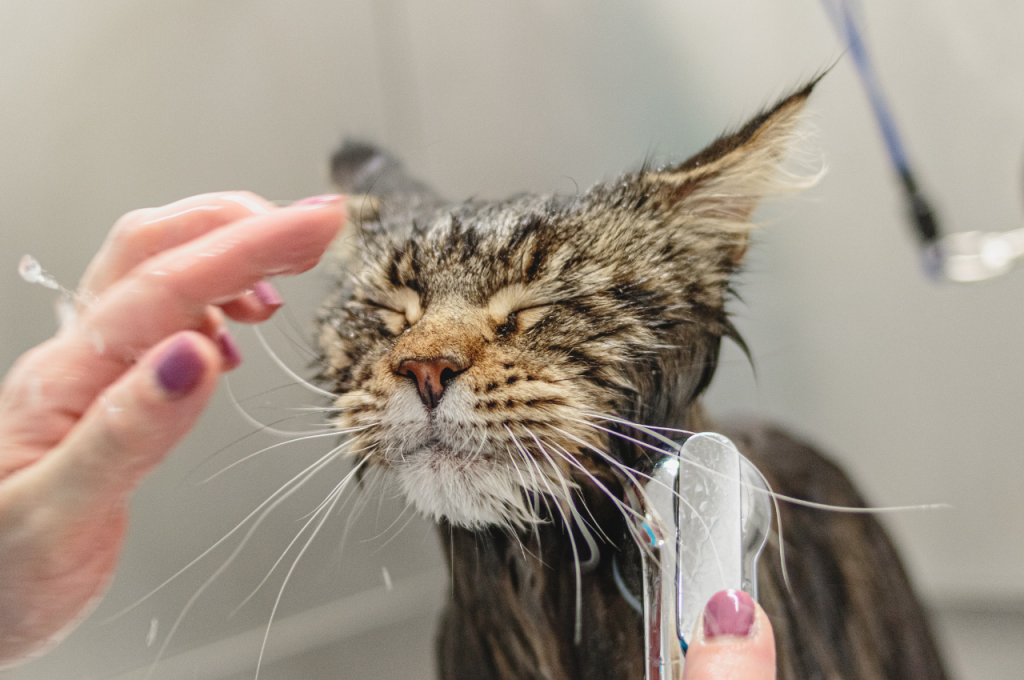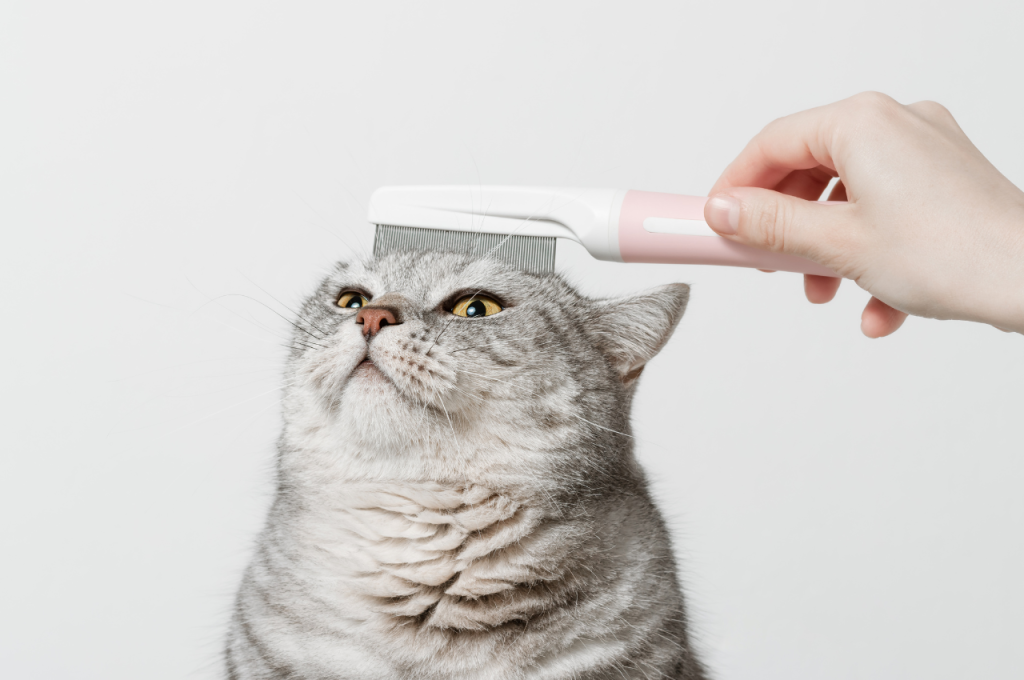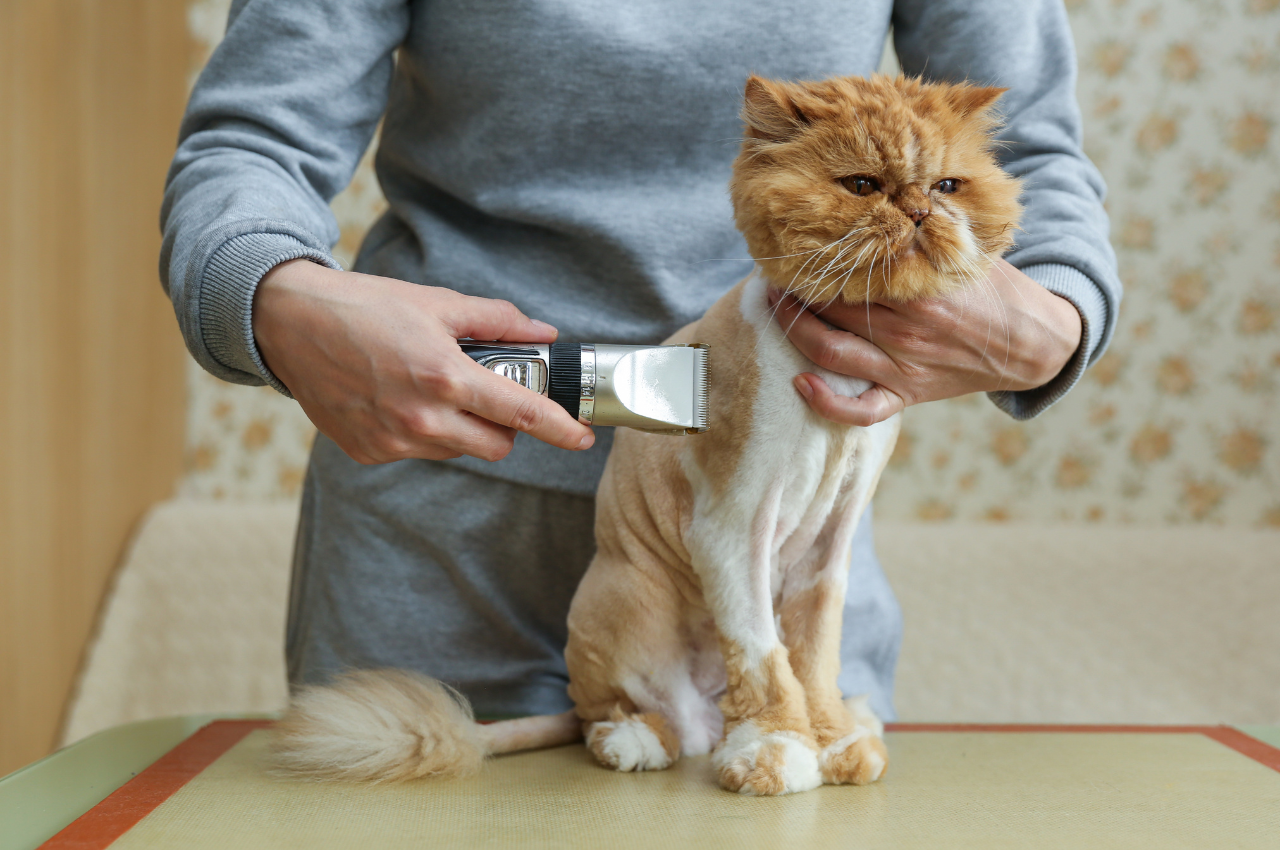Over-grooming in cats refers to excessive and compulsive self-grooming behavior that goes beyond normal grooming habits. It can lead to hair loss, skin irritation, and even open wounds.
This behavior is often triggered by stress, anxiety, or underlying medical conditions. Cats may overgroom certain areas, such as the belly, legs, or tail, causing bald patches and skin problems. Identifying the root cause of over-grooming is crucial in order to address the issue effectively and provide appropriate treatment and support for the cat. Understanding the signs and symptoms of over-grooming can help cat owners recognize when their feline companion may be experiencing this problem and seek veterinary assistance promptly.
Introduction to Feline Grooming Habits
Feline grooming habits are essential, but excessive grooming in cats may indicate underlying issues. Over-grooming in cats refers to obsessive licking leading to skin irritation or fur loss. Monitoring your cat’s grooming behavior can help detect potential health concerns early.

Normal Grooming Behaviors
Cats are known for their meticulous grooming habits, which are considered a natural and healthy part of their behavior. Normal grooming behaviors involve licking, scratching, and biting to keep their fur clean and free from parasites. This self-care routine is essential for their well-being and helps maintain healthy skin and coat.
Significance of Grooming in Cats
Grooming is a vital aspect of a cat’s life as it serves multiple important purposes. The significance of grooming in cats includes the removal of loose fur, dirt, and debris, which prevents the matting and tangling of their coat. Additionally, grooming helps to regulate body temperature, stimulates blood circulation, and provides a sense of comfort and relaxation for the cat.
Identifying Over-Grooming
Over-grooming in cats can be identified by excessive licking, bald patches, and skin irritation. This behavior can be caused by stress, anxiety, or medical conditions and should be addressed by a veterinarian.
Symptoms of Excessive Grooming
Cats are notorious for their meticulous grooming habits, but when does it become excessive? Identifying over-grooming in cats is crucial for maintaining their health and well-being. Here are some signs to watch out for:
- Hair loss: Check for bald patches on your cat’s skin.
- Red or irritated skin: Look for signs of inflammation or sores.
- Excessive grooming in one area: Pay attention to specific areas your cat is focusing on.
- Presence of hairballs: Regularly vomiting hairballs could be a sign of overgrooming.
- Changes in behavior: If your cat seems more anxious or stressed, it could be related to excessive grooming.
When Grooming Becomes a Concern
While grooming is a natural behavior for cats, it’s important to monitor their habits for any signs of overgrooming. By being attentive to these symptoms, you can address any potential issues early and ensure your feline friend maintains a healthy grooming routine.
Potential Causes of Over-Grooming
Understanding the potential causes of over-grooming in cats can help cat owners identify and address this behavior. Over-grooming, also known as excessive grooming, can be a sign of an underlying issue that needs attention. It’s important to consider both medical triggers and psychological factors when determining the cause of overgrooming in cats.
Medical Triggers
Medical conditions can often lead to overgrooming in cats. Allergies to certain foods or environmental factors, parasitic infestations such as fleas or mites, skin infections, and painful conditions like arthritis can all prompt a cat to excessively groom itself in an attempt to alleviate discomfort.
Psychological Factors
Psychological factors can also contribute to over-grooming in cats. Stress, anxiety, boredom, and changes in the environment or routine can lead to excessive grooming behavior. Conflict with other pets, lack of mental stimulation, and emotional distress are all potential psychological triggers for overgrooming.
The Impact of Stress on Feline Behavior
Stress can lead to over-grooming in cats, resulting in bald patches and skin irritation. This behavior, known as psychogenic alopecia, is a response to anxiety and can indicate underlying emotional issues. Understanding the root cause of over-grooming is crucial for addressing feline stress and promoting better well-being.
Cats are known to be clean animals who groom themselves regularly. However, when cats start over-grooming, it can lead to serious health issues. Over-grooming is considered a sign of stress in cats, and it can be harmful to their physical and emotional well-being. Stress can cause a range of behavior changes in cats, and it is important for pet owners to understand the warning signs and how to manage them.
Stress-related Grooming
Stress-related grooming is a common behavior in cats. When a cat is stressed, they may start to lick themselves excessively, causing hair loss and skin irritation. Some cats may also chew or bite their fur, leading to bald patches and skin infections. Stress-related grooming can be triggered by a variety of factors, including changes in the environment, illness, and anxiety.
Managing Environmental Stressors
Managing environmental stressors is crucial to preventing over-grooming in cats. Pet owners should ensure their cats have a comfortable and secure living space, with plenty of hiding spots and perches. They should also provide mental stimulation, such as toys and scratching posts, to keep their cats entertained and engaged. Additionally, pet owners should try to minimize any changes to their cat’s routine or environment, as this can cause stress. To conclude, stress-related over-grooming is a serious issue that can have a negative impact on a cat’s physical and emotional health. Pet owners should be aware of the warning signs of stress in cats and take steps to manage environmental stressors. With proper care and attention, cats can live happy and healthy lives.
Skin Conditions and Allergies
Over-grooming in cats can lead to skin conditions and allergies. Excessive licking, biting, or scratching may result in hair loss, redness, or irritation on the skin. It’s important to monitor your cat’s grooming habits and seek veterinary advice if you suspect overgrooming.

Common Dermatological Issues
Skin conditions and allergies can cause uncomfortable symptoms in cats. Common dermatological issues in cats include flea allergies, food allergies, and environmental allergies.
Allergic Reactions Leading to Over-Grooming
Allergic reactions can lead to excessive grooming in cats. Signs of allergic reactions in cats include itching, redness, and hair loss. Cats may over-groom to alleviate discomfort from allergies.
Behavioral and Compulsive Disorders
Cats engaging in excessive grooming may be displaying signs of over-grooming, a common behavioral disorder. This compulsive behavior can result in skin irritation or hair loss and can be triggered by stress, anxiety, or medical issues. It’s important to consult a veterinarian to address and manage the underlying causes of this behavior.
Treatment Options for Behavioral Disorders
Behavioral and compulsive disorders in cats can manifest as overgrooming, leading to psychogenic alopecia. This condition results from stress or anxiety, causing excessive licking or chewing. Cats with psychogenic alopecia may develop bald patches or skin irritation. Treatment for psychogenic alopecia involves identifying and addressing the underlying behavioral triggers. Some treatment options for behavioral disorders in cats include:
- Behavior modification: Encouraging positive behaviors through rewards.
- Environmental enrichment: Providing stimulating toys and spaces.
- Stress reduction: Minimizing sources of stress in the cat’s environment.
- Pharmacological interventions: Medications to manage anxiety or compulsive behaviors.
Consulting The Vet
Learn about what constitutes over-grooming in cats by consulting the vet. Excessive licking, bald patches, and skin irritation are common signs to look out for. Seeking professional advice is crucial for addressing this behavior effectively.
Cats are natural groomers and keep themselves clean by licking their fur. However, excessive grooming can lead to hair loss, skin irritation, and other health issues. It’s essential to keep an eye on your cat’s grooming habits and consult a vet if you notice any changes. In this section, we will discuss when to see a professional and what to expect during the visit.
When to See a Professional
If you notice any of the following signs, it’s time to take your cat to the vet:
- Excessive grooming to the point of hair loss or bald patches
- Redness or inflammation of the skin
- Lesions or scabs on the skin
- Bumps or lumps on the skin
- Changes in behavior, such as increased aggression or lethargy
- Loss of appetite or weight loss
What to Expect During The Visit
During the visit, the vet will examine your cat’s skin and coat and ask you questions about their grooming habits, diet, and behavior. They may also perform some tests, such as skin scraping or blood work, to determine the underlying cause of the over-grooming. Depending on the diagnosis, the vet may prescribe medication or recommend changes to your cat’s diet or environment to help manage the condition. It’s crucial to follow the vet’s recommendations and continue to monitor your cat’s grooming habits. With proper care and attention, you can help your cat maintain healthy skin and coat.
Managing and Preventing Over-Grooming
Over-grooming in cats refers to excessive and compulsive self-grooming behavior that can lead to skin irritation and hair loss. It is important for cat owners to recognize the signs and take measures to manage and prevent overgrooming to ensure the health and well-being of their feline companions.
Cats are known for their fastidious grooming habits. While regular grooming is essential for their hygiene and health, over-grooming can lead to several health issues in cats. Over-grooming is a compulsive behavior that can be caused by stress, anxiety, skin irritation, or medical conditions. In this blog post, we will discuss what is considered over-grooming in cats and how to manage and prevent it.
Home Remedies and Care
If your cat is over-grooming, you can try the following home remedies and care tips:
- Use a soft cone collar to prevent your cat from excessive grooming.
- Provide your cat with interactive toys or puzzle feeders to keep her mentally stimulated.
- Make sure your cat’s environment is stress-free and comfortable by providing hiding spots, scratching posts, and cozy bedding.
- Check your cat’s skin for any signs of irritation or infection, and treat it promptly.
- Keep your cat’s coat clean and well-groomed to prevent matting or tangles, which can cause discomfort and excessive grooming.
Long-term Prevention Strategies
In addition to home remedies, there are several long-term prevention strategies to manage over-grooming in cats:
| Prevention Strategies | Description |
| Behavior modification | Work with a veterinary behaviorist to identify and address the underlying cause of your cat’s overgrooming behavior. |
| Medical treatment | Your veterinarian may prescribe medications or supplements to address any underlying medical conditions that may be causing your cat’s overgrooming. |
| Dietary changes | Switching to a high-quality, hypoallergenic diet may help reduce skin irritation and prevent overgrooming. |
| Environmental enrichment | Provide your cat with plenty of mental and physical stimulation, such as toys, puzzles, and interactive play sessions. |
In conclusion, overgrooming in cats can be a serious issue that requires prompt attention. By following the home remedies and prevention strategies discussed in this post, you can help manage and prevent overgrooming in your cat. If your cat’s over-grooming behavior persists, consult with your veterinarian to rule out any underlying medical conditions and develop a comprehensive treatment plan.
Real-life Stories
Read on to explore real-life instances of over-grooming in cats and the successful recovery and management strategies implemented.

Case Studies
In a study by the Feline Health Center, a 7-year-old tabby cat named Whiskers showed signs of overgrooming due to stress. After identifying the trigger, Whiskers received behavioral therapy and recovered within 2 months.
Recovery and Management Success
Another case involved a Siamese cat named Luna who suffered from overgrooming. Luna’s owner introduced environmental enrichments and herbal remedies, leading to a successful management of the behavior.
Conclusion
Understanding what is considered overgrooming in cats is crucial for their well-being. By recognizing the signs and taking necessary steps to address the underlying causes, such as stress or medical conditions, we can help our feline friends maintain a healthy coat and skin.
Regular grooming sessions, providing mental stimulation, and creating a stress-free environment can go a long way in preventing excessive grooming behaviors. So, let’s prioritize our cats’ grooming needs and ensure their overall happiness and health.
